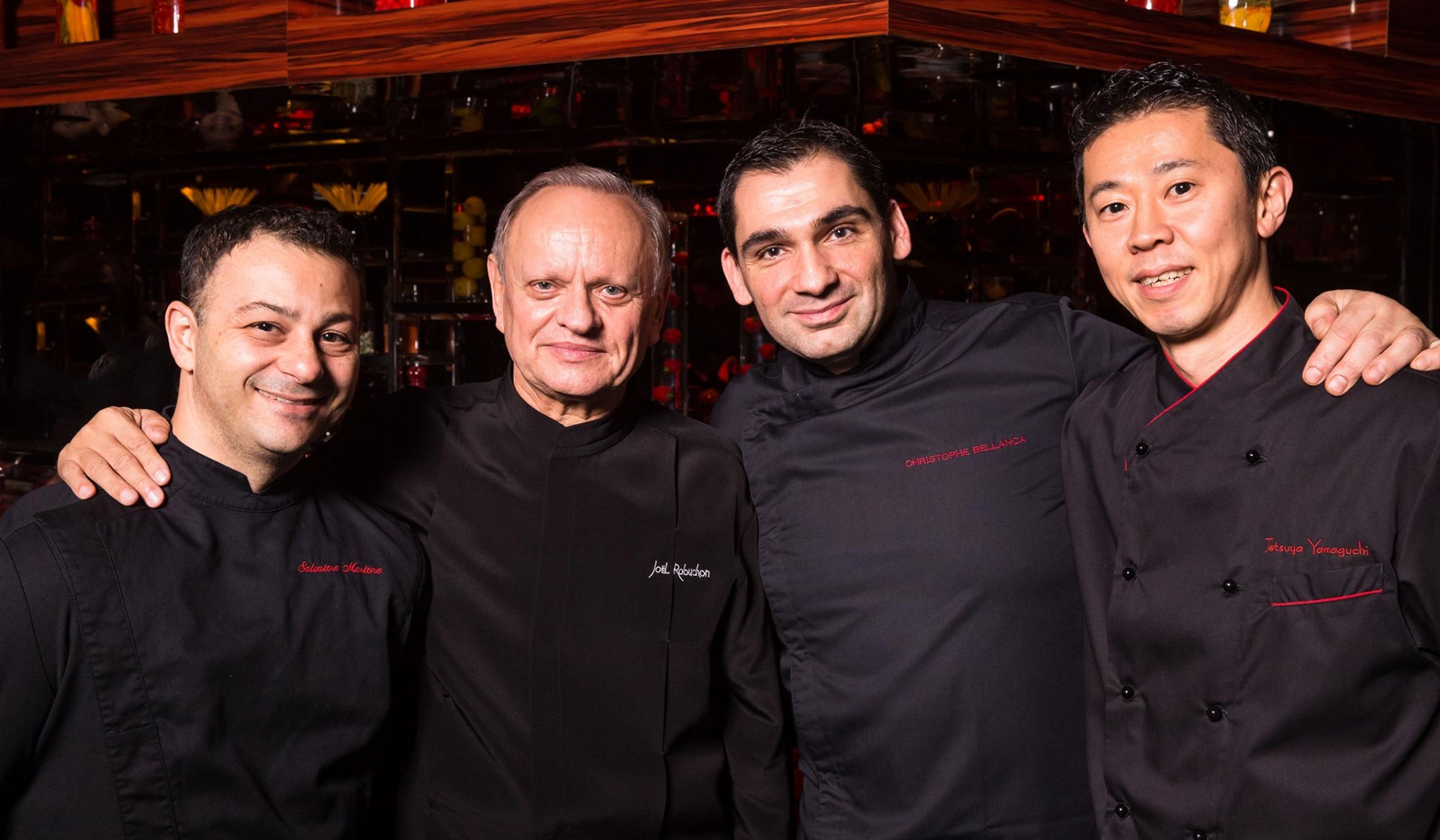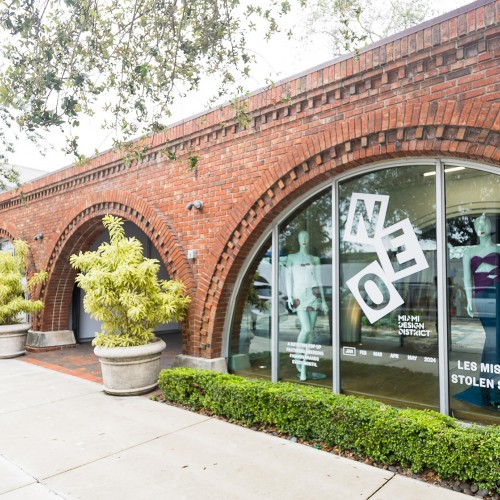L’Atelier de Joël Robuchon honors the chef’s legacy exactly as he would’ve wanted—by continuously innovating and pushing forward.
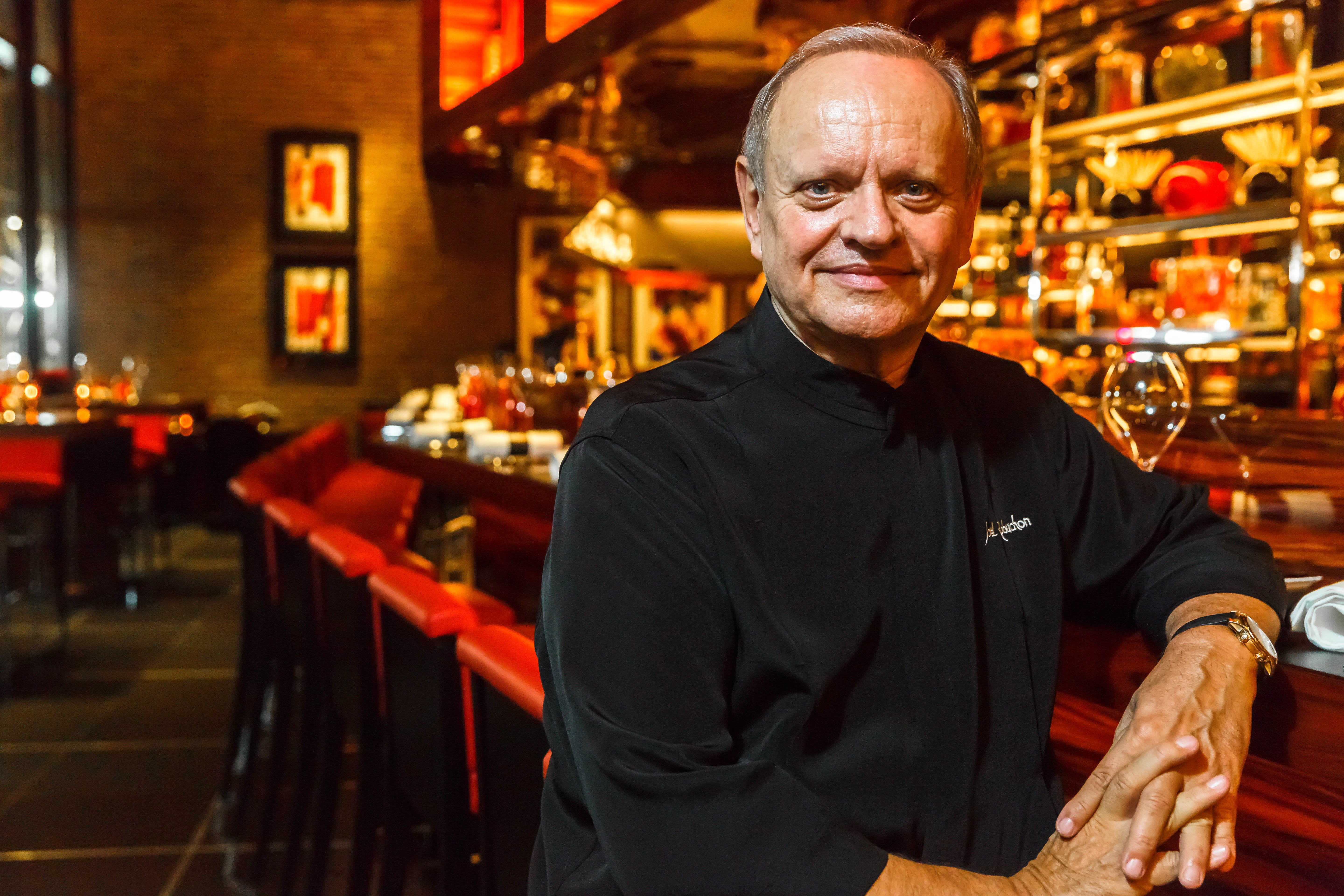
Every Sunday night in the late 2000s, young chef Christophe Bellanca would dine at L’Atelier de Joël Robuchon New York. He’d take a seat at the bar — in its former location inside the Four Seasons Hotel — and sample different dishes, like the poached chicken egg served deep fried, topped with a quenelle of caviar and framed by a meticulous pattern of smoked salmon squares and dots of parsley puree. Each week, he’d study the juxtaposition of flavors, the architecture and design of each plate, and the impeccable service. By 2011, when Robuchon recruited him as the restaurant’s executive chef, Bellanca says, “I understood perfectly what L’Atelier is.”
In August, a year since Robuchon’s death at the age of 73, Bellanca, along with master baker Testuya Yamaguchi and executive pastry chef Salvatore Martone, opened the 12th location of L’Atelier, in the Miami Design District. The Robuchon legacy is maintained by the trio very simply: never forgetting the lessons they learned. With a combined 40 years of experience, the trio worked closely with “Mr. Robuchon” (never Joël), internalizing his rigorous standards.
“He was relentless,” says Martone, who began his Robuchon tenure in 2005 at L’Atelier in Las Vegas. “He knew exactly what he wanted.”
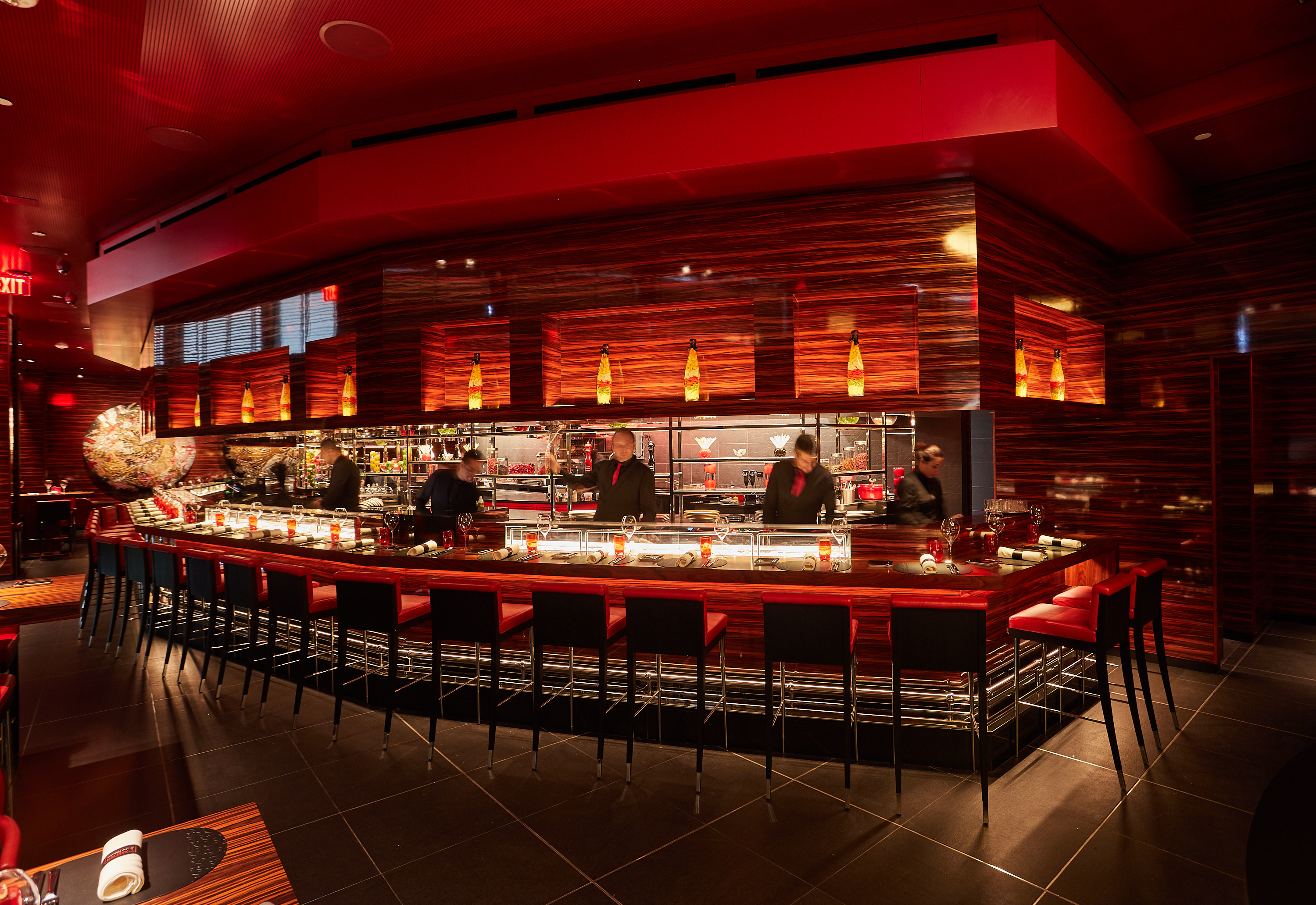
“When I make a dish, I try to think about what he would say,” Bellanca says. “We're never satisfied, we always try to be better. If you're satisfied, you're finished.”
The son of a brick-layer, Robuchon was born in 1945 in Poitiers and after a period of contemplating a career in the clergy, found his true passion in gastronomy. A phenom in a generation not known for youth culture, he took over the kitchen of the Concorde Lafayette hotel at age 29 and went on to earn a staggering 32 Michelin Stars, along the way changing the global culinary landscape in ways large and small.
Inspired by Spanish tapas and Japanese sushi bars, Robuchon started a revolution in 2003 when he opened the first L’Atelier in Paris and in Tokyo. Patrons sat side by side at a bar facing an open kitchen, discarding the old-fashioned stuffiness associated with fine French dining. “He wasn’t just a genius in food,” Bellanca says. “He was a visionaire.”
Meanwhile, each dish tries to focus on three to four of the best local and seasonal ingredients possible, emphasizing a clarity of flavor, perfection of seasoning and elegant plating. Dishes like La Saint Jacques with seared diver scallop, green curry, heart of palm, cucumber and purple cauliflower are among the offerings created specifically for the Miami location. “He was always moving forward, always progressing, always thinking and learning — and pushing his teams to as well,” Yamaguchi says.
Perhaps Robuchon’s most famous creation was his pommes purée. The recipe has four ingredients — potatoes, butter, milk and salt — and requires pushing the tuber through a fine Japanese sieve which breaks down starch, resulting in a luxurious creaminess. The mashed potato recipe and technique is now taught at culinary institutes worldwide.
“Everybody tried to copy it,” says chef Alain Verzeroli, who served as the executive chef of L’Atelier in Tokyo for 17 years and worked with Robuchon for nearly a quarter of a century. “He was proud of bringing this humble ingredient to stardom.”
Though Robuchon himself was not a baker, he was a Frenchman who understood that perfect bread (like pommes purée) was possible – it just required technique, discipline and consistency. Every L’Atelier has a dedicated bread kitchen — the bread service, with its artfully crafted escargot rolls and mini baguettes, is also a highlight of the dining experience. Yamaguchi credits him for inspiring other restaurants to create bread programs. “He always taught me about taste and texture — sour, crunchy, dense, fluffy,” he says. “Sometimes we would taste test a bread 10 or 20 times over a week until it was perfect. And during his next visit, he might want it to be different.”
Robuchon personally picked the Miami location, which telegraphed a message to other culinary leaders. Chef Brad Kilgore signed the lease for his restaurants in the Miami Design District, Kaido and Ember, knowing Robuchon was coming. “For me it would be an honor to share the same plaza,” he says. “It helps prove that Miami is worthy of the most Michelin-starred chef in the world.”
Though every L’Atelier around the world shares many of the same offerings, each also has dishes created expressly for and with the local bounty of that location. For Miami, they use regional ingredients like stone crab, soursop and peaches. “You can find better strawberries in New York,” Martone says, “but the peaches are much better in Florida.”
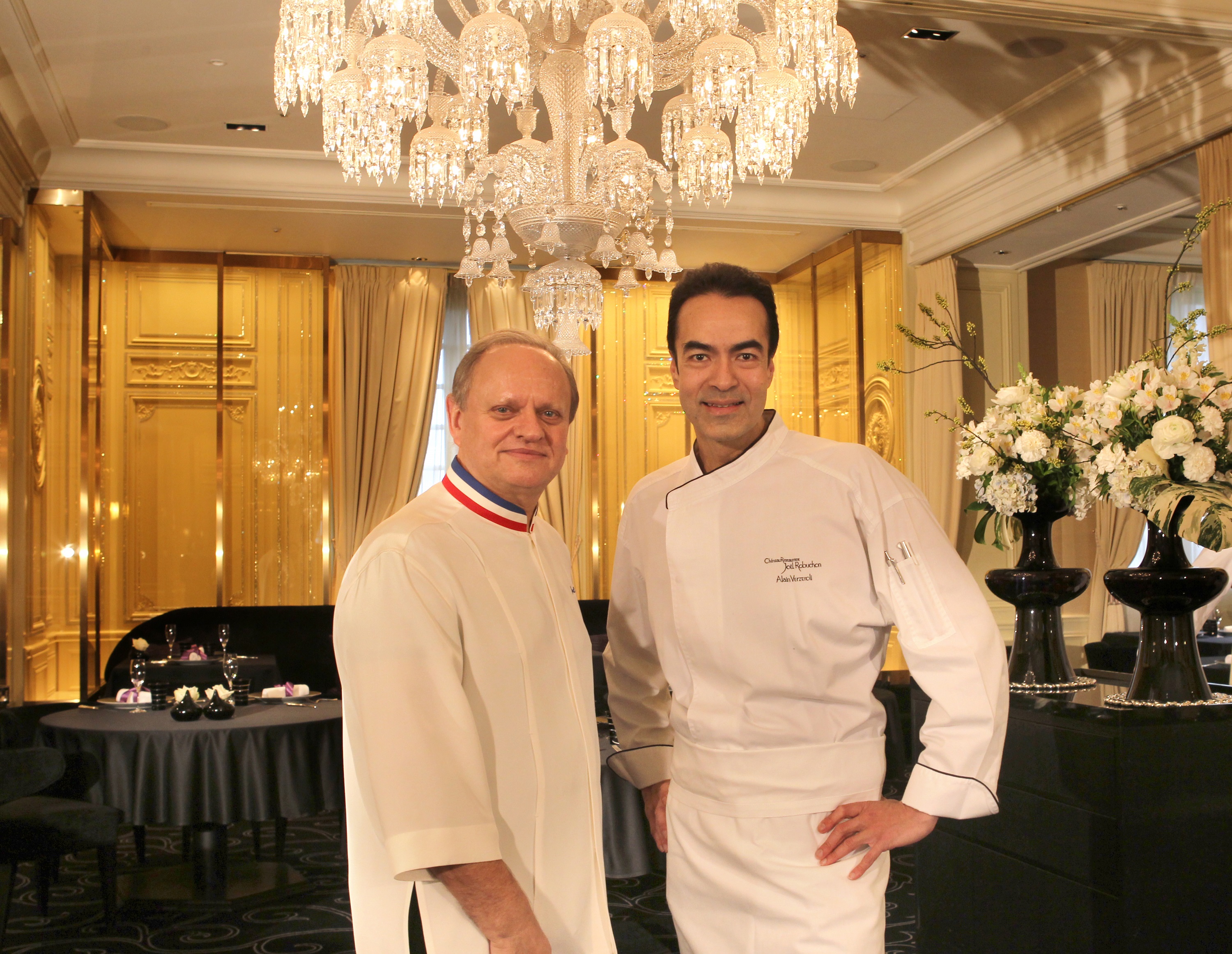
Like all true masters, Mr. Robuchon himself never stopped learning. “What was amazing was his passion for cuisine,” says Verzeroli. He now helms Invest Hospitality’s vegetable-forward Le Jardinier, which opened in both the Design District and New York this year. “He had one project, L’Atelier, in Mumbai, India, and he was like, ‘It’s going to be fantastic. They are the best for spices, I'm learning a lot.’ It was amazing, at his level — he was 70, for him to say he learned a lot.”
Bellanca, who skips back and forth between the Miami and New York kitchens, says, “Mr. Robuchon is still with me every day. Everything we do in the kitchen is always about him. This is L'Atelier de Joël Robuchon.”

